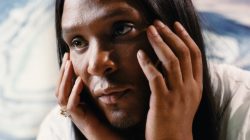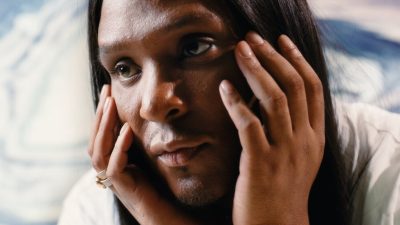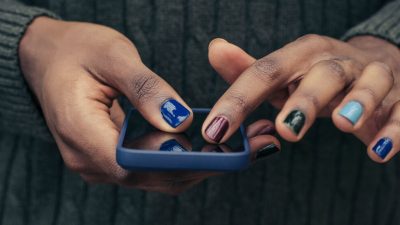Two girls on the street pointed and laughed at me. My Uber driver stared at me suspiciously. My neighbor’s eyes popped out of his head, and when my husband saw me, he begged me to remove it before date night.
It was the fake chin that Emily Schubert, 32, a makeup and prosthetics artist, had placed on me earlier that day. It elongated my face and protruded far from my actual chin, making me look like a cartoon version of myself. It was lightweight, it matched my complexion perfectly and it moved fluidly with my expressions.
In her new book, “Beauty of the Beast: A Makeup Manual,” out this week with the art house studio A24, Ms. Schubert shares her tricks for creating this and other uncanny looks. There are instructions on how to age fingernails, how to apply and remove prosthetics, how to create the illusion of missing teeth and how to make someone look sick or dead. Ms. Schubert also shows readers how to make scars, neck bladders and bald caps.
“This book is for anybody who is a budding filmmaker who wants to know how to make these things,” Ms. Schubert said, wearing a charcoal gray shirt stained with paints and makeup that she has worn on all of her jobs. “They are all of these things that people have asked me over the past 15 years, 10 years about indie filmmaking, where they’re like: ‘OK, we have this character and they’re missing a tooth. Can you do that?’”
Over her nearly two decades in the field, Ms. Schubert has worked on films like “Uncut Gems” and “Good Time,” and has done makeup for dozens of actors, singers and celebrities, and even Bill Clinton. She said she began experimenting when she was 13 years old, and long before.
“I remember I used to wear those washable Crayola markers as lipstick to preschool,” Ms. Schubert said, standing in her Brooklyn studio. “But I liked the yellow. I liked to make it look like I was sick.”
Her passion for makeup was inspired by a book as well. As a teenager, she discovered “Bobbi Brown Makeup Manual” and became obsessed with the legendary makeup artist. After a back surgery at 13, Ms. Schubert said, she began to think about makeup and herself differently.
“After my surgery, I went to the bathroom and I realized that the tiles were gray behind me, but I was also gray because I lost so much blood,” Ms. Schubert said. “I started thinking about beauty then in a different way. To do beauty makeup is just to look alive.”
While she was bedridden for close to six months after her surgery, she started doing special effects on herself. It was her coping mechanism, she said. When she returned to Horace Mann School the following year, she began to do her friends’ makeup, too. Sometimes she used makeup to beautify them, but occasionally she made them look sick, so they could skip exams. Not long after, at 14, she was hired by her older brother’s friend, who was attending the New York Film Academy, to do makeup on the set of his project.
Her first task on set? To make a 9-year-old boy look as if he had survived a zombie apocalypse, she recalled.
“I had a little bag with black eyeliner and a light blush,” Ms. Schubert said. “I took the black eyeliner and smudged it in between his ribs. I knew what that looked like because of what I went through.”
Later, at Wesleyan University, Ms. Schubert studied architecture, but she stayed close to the film department, especially when it came time to help seniors working on their end-of-year theses. Many of those same people ended up enlisting her help for projects when she returned to New York after graduation.
One of them was Matthew Barney, an artist who hired Ms. Schubert for his five-part video installation, “Secondary.” Because the project was based on real people and true events, Mr. Barney said, Ms. Schubert decided that the costuming and makeup should oscillate between the past and the present.
“Emily is not, like, a literal thinker,” Mr. Barney said. “I think somebody who thinks more abstractly is a great collaborator in a situation like this, and Emily is definitely like that. She sort of thinks around things in a really compelling way.”
Dev Hynes, the musician and composer known as Blood Orange, is another frequent collaborator of Ms. Schubert’s who says he returns to her for her capacity to envision a fully fleshed-out character.
Mr. Hynes, who has collaborated with Mariah Carey, Solange Knowles and Kylie Minogue, has worked with Ms. Schubert on music videos like “Hope” and “Dark and Handsome.”
“She gets things very quickly,” Mr. Hynes said. “Once that’s understood, she then will go further than where you were thinking and go to places that then you’re like: ‘Oh yeah, that is amazing. I would never thought of that.’”
He added, “There won’t be another viewpoint similar to it, which I think is very important.”
Ms. Schubert said that spending time with her own reference guides and manuals helped her develop her own aesthetic taste. In addition to Bobbi Brown’s 2008 book, she credits “Dick Smith’s Do-It-Yourself Monster Make-up” by Richard Emerson Smith, who won an Oscar in 1985 for his work on “Amadeus” and worked on movies like “The Godfather” and “The Exorcist.” His hope that others might learn from his expertise was so sincere that he put his phone number in the back of the book.
Ms. Schubert said she wanted to channel Mr. Smith’s collaborative spirit with her own makeup manual.
“I loved his open heart heartedness,” she said, while using a cut paintbrush to add the blue and pink tones of muscle to my prosthetic chin. “I have had people say to me, ‘You are giving away all your secrets.’ But I don’t see it that way at all. I think it’s a really beautiful thing to do.”
Besides, she added, “It’s not only the recipe that makes the soup good, either.”
Sumber: www.nytimes.com












